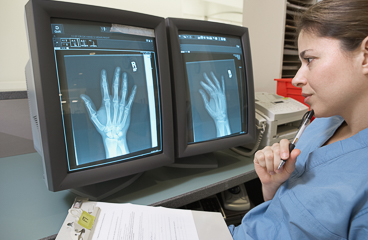Pediatric X-Ray: About Your Child's Test
What is it?

An X-ray is a picture of the inside of your child's body. Depending on the part of his or her body to be
X-rayed, it may show bones, organs, foreign objects, or pockets of air or fluid. Any part of the body can be
X-rayed, including the head, chest, belly, arms, and legs.
Why is this test done?
Doctors use X-rays to help find out what's wrong or whether there is a problem, what is causing pain, or
where a foreign object may be located in your child's body.
X-rays can also help check the position of a tube or device that has been put in your child's body. Examples
may include a gastrostomy tube or a port.
How do you prepare for the test?
-
Reassure your child that the X-ray doesn't hurt and that it will be over quickly.
-
Tell your child what to expect. The X-ray room will have unfamiliar devices in it, and it may be cold.
Reassure your child that you will be close by at all times.
-
Many children are curious about what their "insides" look like. Others find the test scary. You can help
take the mystery out of the test by asking your doctor or X-ray technician if your child can look at the
X-ray when it's done.
How is the test done?
-
Your child will need to hold very still while the X-ray is taken. A padded brace, foam pads, a headband,
or sandbags may be used to hold your child's body in place, depending on what part of the body is being
X-rayed.
-
More than one X-ray view may be taken.
How long does the test take?
What happens after the test?
Follow-up care is a key part of your child's treatment and safety. Be sure to make and go to all
appointments, and call your doctor if your child is having problems. It's also a good idea to keep a list of
the medicines your child takes. Ask your doctor when you can expect to have your child's test results.
Current as of: July 26, 2023
Content Version: 14.0
Care instructions adapted under license by your
healthcare professional. If you have questions about a medical condition or this instruction, always ask
your healthcare professional. Healthwise, Incorporated disclaims any warranty or liability for your use of
this information.